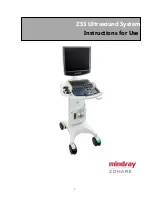
RODIX Inc.
CE notes about voltage fluctuations and flicker
What you need to know about the CE voltage fluctuations and flicker standard:
For machines that have the CE mark, one of the many standards that machine must conform to is the Limitation of
voltage fluctuations and flicker. The machine configuration will determine when to apply this standard.
International Standard IEC 61000-3-3
Effective
1/1/2001
“Limits – Limitation of voltage fluctuations and flicker in low-voltage supply systems for equipment with rated
current
≤
16 amps per phase.” This part of IEC 61000 deals with the limitation of voltage fluctuations and flicker
injected into the public low-voltage supply system (electric utility). When the amperage is over 16 amps, a
companion standard, IEC 6100-3-11 is applied.
The limits in this standard are based mainly on the subjective severity of how much a 230V/60 W light bulb flickers
when the supply voltage fluctuates. The frequent flickering of a light bulb can adversely affect some people.
When the standard does not apply:
This standard doesn’t apply if the 230V machine is powered by a step down transformer.
The scope of the standard states:
IEC 61000-3-3 is applicable to electrical and electronic equipment having an input current up to and including 16A
per phase, and intended to be connected to public low-voltage distribution systems of between 220V and 250V at
50Hz line to neutral.
Public low-voltage distribution systems are power supply systems allowing the direct connection of equipment with
rated voltages between 200 and 260V (single phase) or between 340 and 450V (phase to phase). Higher voltage
distribution systems, which are connected to power substations, are not considered to be public low-voltage systems.
A 230V machine with a vibratory feeder is typically powered by a step down transformer that is installed in a
factory. Thus the machine is powered by a higher voltage distribution system that is not directly connected to the
230V public low-voltage system. Because of this, the machine is outside the scope of the standard
1
. A machine that
is connected to 60Hz power is also outside the scope of the standard.
When the standard does apply:
The standard is applicable when a 230V machine is powered directly from the 230V public low-voltage supply
system.
The vendor that supplies the finished machine is responsible for compliance to the applicable CE standards, not the
end user. This vendor is responsible for performing the compliance testing on the finished machine.
Please note that EN61000-3-3 applies to 230V equipment. There are no limits for 120V equipment since these
limits have not yet been defined; however, in Europe the 120V equipment will be connected to a step down
transformer that might connect to the public 230V power mains. This means that 120V equipment that does not
meet the standard may cause a step down transformer that connects to the public 230V to fail to meet the standard.
What causes voltage fluctuations:
When an electrical load is turned on, it can cause the supply voltage to decrease a little bit due to the resistance and
the inductance of the supply wires and step down transformer. The addition of a larger amp load causes a larger
change to the supply voltage than a small amp load does. When the load turns off, the supply voltage rebounds back
to the original value.
Disclaimer:
Standard EN61000-3-3 applies to the vibratory feeder system, and it does not apply to the vibratory feeder control.
The amount of voltage fluctuations and flicker depends on how often the electrical load is turned On and Off by the
machine and how large the load is.
1
From TUV Rheinland, FAQ
http://www.jpn.tuv.com/en/services/product_testing/all_types_of_products/electromagnetic_compatibility_services_emc_/emc_faq.php
© RODIX Inc. 2006
E:\Eng\CE\CE Flicker 060511.doc



























